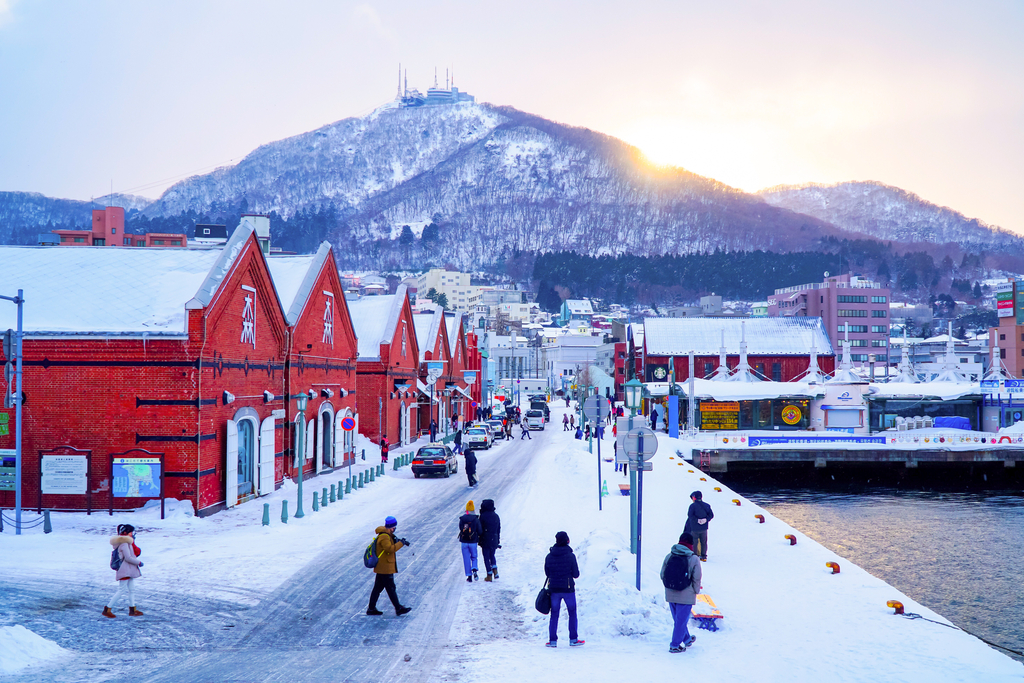Climate in Japan is as diverse as its culture. Japan offers a fascinating array of weather. Japan has four seasons, but three distinct zones can also define the country’s climate. From the northern regions with snowy winters and warm summers to the southern islands bathed in year-round warmth and rain. Here’s everything you need to know about the climate in Japan.
Table of Contents
ToggleDoes Japan only have four seasons?
Japan’s four seasons offer something special throughout the year. Firstly, Summer brings warmth and exciting festivals like Tanabata and Gion Matsuri. Secondly, the leaves turn vibrant red and orange in autumn, creating breathtaking landscapes. Not to mention winter blanketing the northern regions in snow, making it perfect for skiing. Lastly, spring starts with cherry blossoms, and people gather for hanami picnics to enjoy their beauty. These four seasons in Japan are more than just weather; they’re a big part of the culture and provide unique experiences for everyone.

While this is the stereotypical image of Japan, the country spans over 1900 miles from northeast to southwest. With such a huge span, you can bet that the north of Japan will have a different climate than the southernmost areas. There are three distinct climates in Japan. For example, our stereotypical vision of winter will be totally different in Northern Hokkaido than in Southern Okinawa. Let’s take a closer look.
Humid Continental Climate in Japan
A humid continental climate has clear seasonal changes and regular to high rainfall. You can experience this climate in the middle to high latitudes of the Northern Hemisphere, including North America, Europe, and Asia.

One part of Japan with a humid continental climate is Hokkaido, Japan’s northernmost island. This climate type brings distinct weather patterns to the region. Winters in Hokkaido are cold and snowy, therefore making it a winter wonderland for enthusiasts of winter sports. White snow blankets the island’s landscapes. Cities like Sapporo host the famous Sapporo Snow Festival, showcasing incredible ice sculptures.
Hokkaido’s humid continental climate offers a unique contrast to the rest of Japan, and the island’s landscapes are a testament to the beauty of the changing seasons. Whether you’re a winter sports enthusiast or a nature lover, Hokkaido’s climate provides diverse experiences for all.
Are you looking to enjoy traditional Japanese snacks this fall? Try Sakuraco! Sakuraco delivers traditional Japanese snacks, teas, sweets, and snacks from local Japanese makers directly to your door so you can enjoy the latest treats directly from Japan!
Humid Subtropical Climate in Japan
A humid subtropical climate is a distinct season and relatively high humidity levels throughout the year. This climate is expected in parts of the southeastern United States, China, Japan, and other areas with similar geographical features.

In central Japan, regions like Tokyo and Kyoto experience this climate. The summer months in these areas can be hot and humid, with occasional heavy rainfall. Winters are mild, making these regions different from the northern parts of the country, which have colder weather.
Summers in areas with a humid subtropical climate are typically warm to hot in the summer, with some thunderstorms. These conditions make air conditioning necessary in many of these regions. In general, summer is a great time to enjoy outdoor activities in this climate. These activities also include summer festivals in Kyoto, taking an evening boat ride around Osaka Castle, and going to Odaiba Beach in Tokyo.
Tropical Rainforest Climate in Japan
Generally, the tropical rainforest climate is found near the equator, typically within about 10 degrees north and south of the equator. This climate has specific weather patterns. It is primarily found in regions of Central and South America, Southeast Asia, and some Pacific islands. Japan exhibits a tropical rainforest climate, particularly in its southernmost region of Okinawa. This is especially unique for a country known for its temperate climate.

The tropical rainforest climate in Japan is found in Okinawa Prefecture, which includes the Okinawa Islands, Miyako Islands, and Yaeyama Islands. These islands are in the southwestern part of Japan, closer to Taiwan than to mainland Japan.
Unlike the four-season climate in many parts of Japan, Okinawa does not have four seasons. Instead, it maintains a constant tropical environment. Okinawa’s tropical rainforest climate makes it a unique place in Japan. Visitors can experience a year-round tropical paradise with green landscapes, beautiful beaches, and distinctive flora and fauna. Overall, it’s a popular destination for diving and water sports because of its warm, clear waters.
Which climate is best for travel?
The answer to this question depends on what activities you want to do. Do you want to enjoy a winter wonderland? Hokkaido’s humid continental climate is for you! Do you want to experience stereotypical Japanese weather? In that case, go for humid subtropical locations like Tokyo and Kyoto! Would you like to relax on the beach no matter the time of year? Then, the tropical rainforest climate of Okinawa is perfect for you. Which climate do you think is best for your travel plans? Let us know in the comments below.











